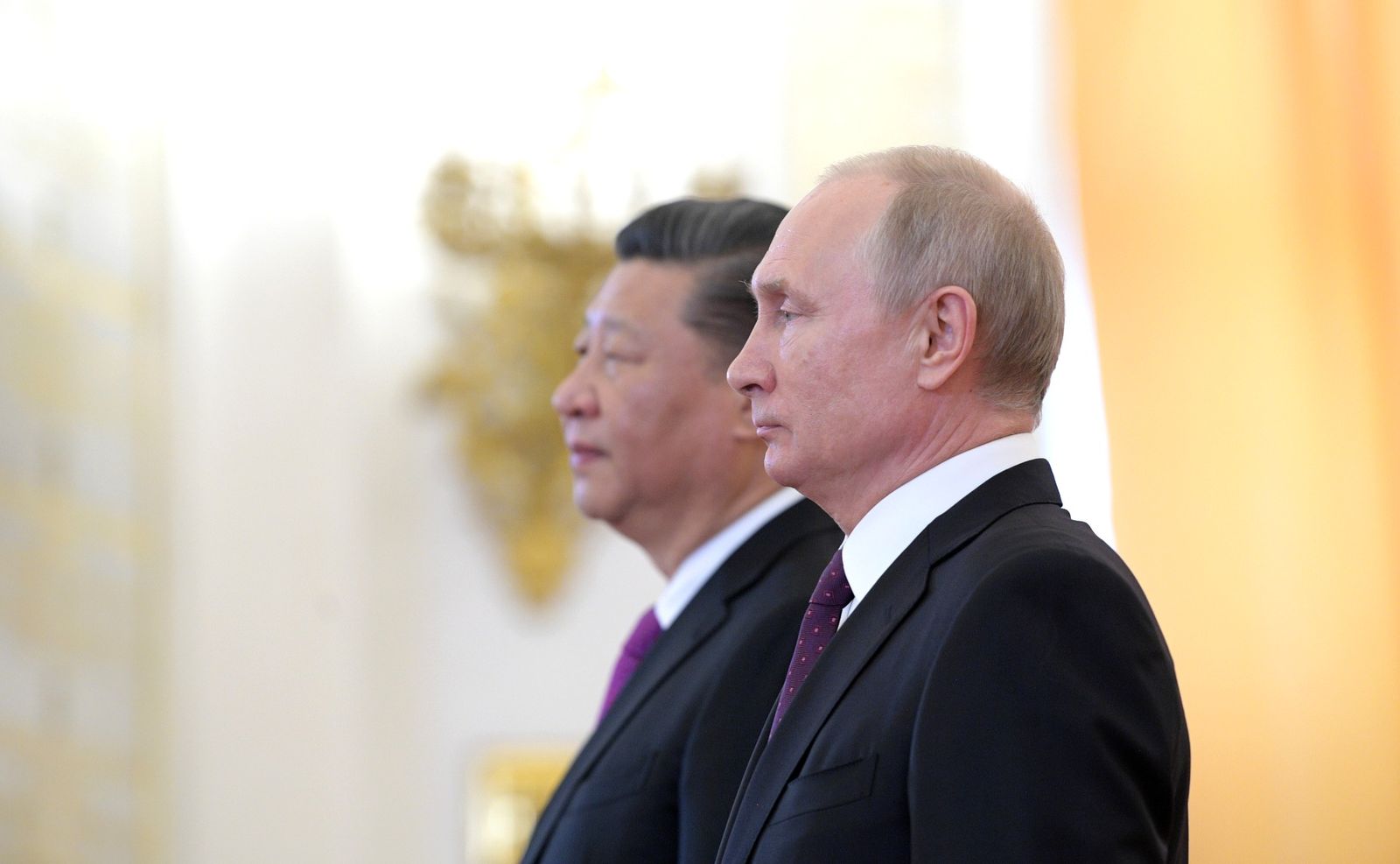Ezra F. Vogel. Originally published in the HIR October 1980 Issue.
As an academic observing developments in East Asia for the past two decades, I have gradually come to a disturbing conclusion: The United States is being surpassed by Japan as a modern industrial power, and this creates serious consequences America is not confronting.
Many Americans are aware of the success of individual Japanese products. Japanese textiles, produced with cheap labor, were already inundating the United States in the 1950s. Since then, Japan's labor costs have risen and are now on a par with ours, but Japanese companies have raised productivity and expanded their ability to produce quality products at competitive prices. Even after World War II, the Swiss continued to dominate the international watch market, but last year the Swiss produced about fifty million watches while Japanese companies produced about sixty million. The Germans dominated the camera industry before World War II; they have been replaced by the Japanese. Americans after World War II enjoyed a substantial lead in producing radios, but we are now eclipsed by the Japanese.
In the 1960s, America led the manufacture of televisions, but the Japanese now dominate this product. Japanese steel plants have a capacity roughly equivalent to those of the United States and almost as much as those of the entire European Economic Community, but their capacity is the most modern and sophisticated in the world, a fact we are belatedly acknowledging by using Japanese standards as the base measure for determining the steel trigger price.
In motorcycles, the dominant four companies in the American market (Honda, Yamaha, Suzuki, and Kawasaki) are all Japanese. The United States reigned over the automobile industry, but last year Japan produced approximately ten million cars, about the same as the United States and over one hundred times greater than its production twenty years ago. One measure of the competitiveness of Japanese versus American cars is sales for export: the United States exported a few tens of thousands while Japan exported almost five million. By the late 1970s, before Europe invoked barriers, Japan was producing shipping tonnage equivalent to that of all of Europe and the United States combined, and it was doing this in shipbuilding facilities unrivaled elsewhere.
Japanese abilities are not limited to a narrow range of products. In pianos (hardly a traditional Japanese instrument), bicycles, tennis and ski equipment, snow mobiles, pottery, glass, and machine tools, Japan is a strong competitor. In calculators and office copying machines, Japanese advances are impressive. In industrial robots, which provide the efficiency of mass production for smaller orders, Japan is perhaps the world's leader. In semi-conductors, it already poses a threat to American industry. In computers and telecommunications, Japanese companies are making advances, both in internal and international markets. With the new jet aircraft being produced with the cooperation of Mitsubishi, lshikawajimaharima, and Kawasaki, Japan promises to become an effective competitor in airplane production in the 1980s. In their capacity to produce integrated construction projects abroad, they are unsurpassed. In nuclear facilities, space rocketry, and coal liquification, Japanese research is advancing rapidly.
Japanese success reaches beyond the industrial sphere. In transport equipment, the shinkansen bullet train, which already had linked Kyoto and Tokyo fifteen years ago, is faster than any train the United States is considering; and track is now being extended over a thousand miles, from the southern island of Kyushu to the northern-most point on the main island of Honshu. The Japanese also have plans for a train that will run from the center of Tokyo to Narita airport at a speed of about three hundred miles per hour. Knowledgeable Japanese friends observing the construction of our subway line here in Cambridge, Massachusetts, have expressed surprise at our outmoded construction equipment.
It would be difficult to claim that Japan's internal market distribution system is among the world's more efficient, although it could be argued that it provides customers with convenience, good service, and a pleasant atmosphere. But in international trade, each of the six largest Japanese general trading companies has a world-wide scope of activities and an information network unrivaled by any foreign firm. Roughly half of the trade across the Pacific passes through the hands of these six trading companies, to say nothing of other large Japanese trading firms. The breadth of their networks enables them to put together business arrangements impossible for smaller companies. Any American companies which might try to compete would soon confront the uncertainties of antitrust law.
By 1978, of the world's largest 30 banks, 4 were American, and 11 Japanese; of the top 300, 58 were American, 61 Japanese. Although Japanese lending is concentrated in its internal market, the formidable assets accumulated by Japanese banks will make Japanese financial institutions strong competitors in the 1980s as Japanese companies and investment continue expanding throughout the world.
The Aggregate Picture
When one looks at the aggregate picture, Japanese successes are just as striking. When the Allied Occupation ended in 1952, Japan had almost recovered its pre-war level of production, with a gross national product (GNP) then roughly one-third that of England or France. Twenty-five years later its GNP was roughly the same as England and France's combined, or about half that of the United States. The United States has roughly twice the population of Japan, so the per capita output is roughy the same.
In the international marketplace, the chronic American trade deficits and continuing Japanese trade surpluses suggest that Japanese trade barriers, which have decreased markedly since the late 1960s, cannot entirely explain their competitive superiority. The Japanese market is not easy for outsiders to enter, and Japanese businessmen and government officials at times still add to the difficulties of foreign businessmen. But if one aggregated all the artificial restraints on entry of foreign goods into the American market - the import restraints on textiles, shoes, television sets, automobiles, steel, and even agricultural products; the size of military procurement closed to foreign producers; and the varying state rules slowing down entry of various foreign goods - it is at least open to question whether complete opening of the American and Japanese markets would alter the bilateral trade balance in America's favor.
In 1978, Japan had a world-wide industrial trade surplus of $76 billion. Meanwhile, the United States, which had enjoyed an industrial trade surplus in previous years, recorded an industrial trade deficit of $5 billion. Using the average yen-dollar exchange rate for 1978, the value of Japanese industrial output was about two-thirds that of the United States, or about one and one-half times our industrial output per capita. Because of the increased costs of oil imports, Japanese trade surpluses have vastly decreased in 1979, but long-range trends are in Japan's favor.
In predicting future trends, one should note that Japan's absolute investment in new plants and equipment for 1978 was approximately the same as that of the United States, or about twice America's investment per capita. This is perhaps not surprising considering that the Japanese personal saving rate, which had been averaging about twenty percent, has been running higher the past several years, while the American saving rate, which had been running at about six percent, has fallen to less than four percent. If trends in Japanese and American growth rates continue, Japan will soon be investing more in absolute terms in modern plants and equipment than the United States. The proportion of GNP going into research and development (R&D) has been falling in the United States, but rising rapidly in Japan. While the U.S. still
spends more on basic R&D, Japanese R & D is concentrated in areas likely to have a high pay-off in industrial competitiveness.
Japanese Advantages
Japan has many advantages over the United States. It has a disciplined work force with fewer unpredictable work stoppages. Although a higher proportion of Japanese than American workers are unionized, Japanese workers are more convinced that their companies will look out for their interests. They know that the lifestyle of high company officials is not too different from their own and that executives will also sacrifice when the company encounters difficulties. The Japanese labor force is better educated. In comparative international tests sponsored by the United Nations Educational, Scientific, and Cultural Organization, e Japanese children greatly surpass American children in science and mathematics on the junior high school and high school levels. As we move to higher levels of information technology, this superiority will make a difference. Unemployment compensation in Japan is smaller than in the U.S., and the differentials between low-level wages and unemployment benefits are sufficiently great so that low-paid workers are eager to retain their jobs.
Japan has highly trained government officials who specialize in analyzing and encouraging the development of competitive industries. A much higher proportion of Japanese newspaper and television reporters are not only fluent in foreign languages, but familiar with international economic issues. They play an important role in raising public understanding of foreign developments worthy of emulation. In comparison with their American counterparts, Japanese businessmen and government officials are, on the average, better informed about world developments and more concerned about producing goods that will be competitive in world markets in the long run.
Government policy encourages industries that could be competitive in the future and reduces aid and protectionist measures for mature industries. The commitment of government leaders to business success and their ability to work with business leaders provide a more secure environment for investment. Because there is relatively full employment and a greater commitment on the part of companies to look after workers, political pressures from declining sectors are less intense. The existence of a coherent, well-thought-through industrial policy also serves as a counterweight to interests which oppose those of the nation as a whole.
Japan is vulnerable because it imports such a high proportion of its energy resources; but the United States now imports more petroleum than Japan, and the Japanese have been more successful in developing public support for long-range national plans for diversification of energy sources and for conservation. In short, I see no reason to disagree with the estimates of economists who predict that over the next several years Japanese growth rates are likely to be two or three times those of the United States and that the differences will be even more striking in industrial production.
Japan is merely the cutting edge in the spread of industrial know-how to other countries in East Asia. South Korea, Taiwan, Hong Kong, and Singapore are already acquiring industrial capacity in many areas, and China will begin to expand its export capacities in the years ahead. If we retain a healthy economy and use our comparative advantage, we can absorb many of their exports, encourage their development, and retain their friendship. If we resort to protectionism, we lose their goodwill and our ability to remain competitive.
Conclusion
My purpose is not to add to the gloom that already pervades America. But I feel a responsibility to call attention to the fact that our problems are deeper and more long term than we generally realize. Last-minute responses to these difficulties can only lead to unwise short-term measures. In the meantime, the continued deterioration of the market shares of American companies will reduce our nation's tax base and exacerbate cleavages between the taxpayers and those who would spend more for human services or military preparedness. It is tempting to say, as many Britons have said, that we should now concentrate on the quality of life. But to do so would be costly. The British have learned too late that neglecting basic economic competitiveness leads to declining standards of living, reduced public services, and a fraying of the social fabric, to say nothing of the contracted role for the British in world affairs. After observing Japanese successes, I see no reason to believe that anti-inflationary measures and a few tax incentives would be adequate to the challenge.
It is also not my purpose simply to register alarm that by some measure or another the United States is behind Japan. In a complex world, it is natural and desirable for Japan or some other country to be ahead on any number of measures. America did not profit from England's decline, and Japan will not profit from America's decline. It is in the interests of Japan and other allies to have a healthy and prescient American partner.
But unless we put our house in order, our problems could not only lead to a lower standard of living but also to a divided America in which each group clings desperately to its share of the pie. Our national life will become more backward-looking and protectionist, resulting in the disappearance of qualities in which we take pride: our optimism, openness, and generosity.
Nor is it my purpose to suggest that we imitate Japan. We must find our own ways to respond to the challenge. Nevertheless, we cannot respond effectively without a much greater public awareness of the gravity of the problem. We cannot continue to rely on antitrust laws and political pressure from the uncompetitive to determine our nation's industrial policy. We must find ways both to reduce the cost and intervention of government and to increase its planning and coordinating capacities. Government – and only government – can make certain strategic decisions, but to make these decisions wisely requires drawing on the competence which only business and labor possess. A new mission for trade unions is essential, for with lingering adversary relations we all lose. These problems will at best require many years to correct, but certain trends may be irreversible if we do not act quickly. This election year may provide a good opportunity to begin.




